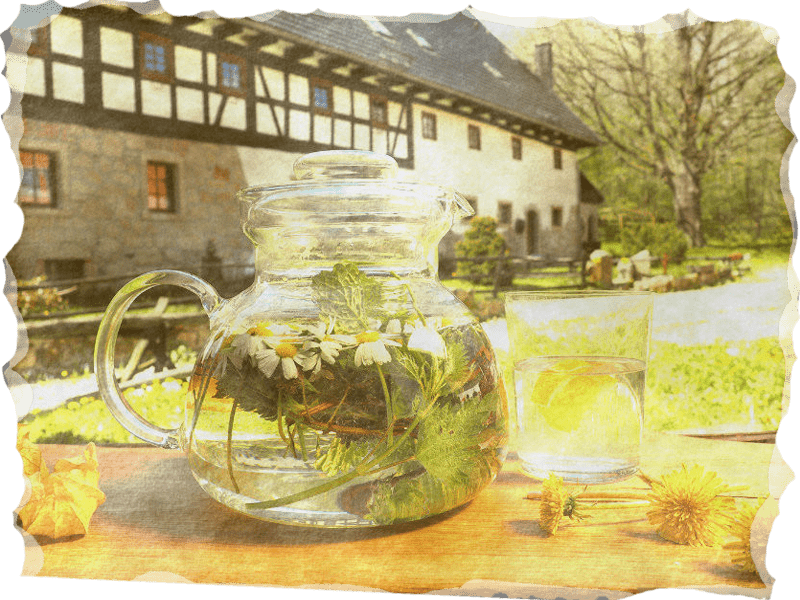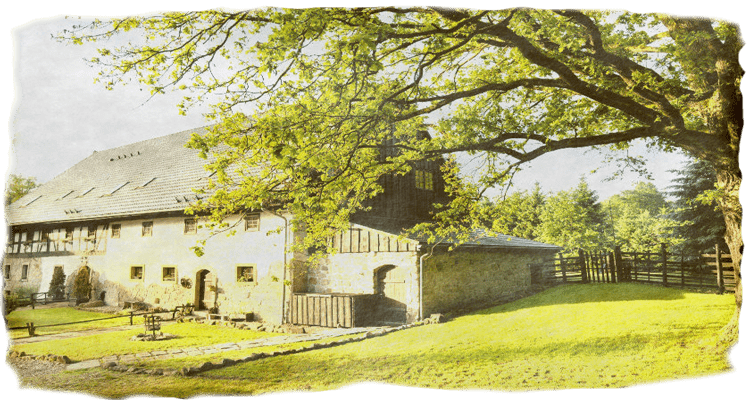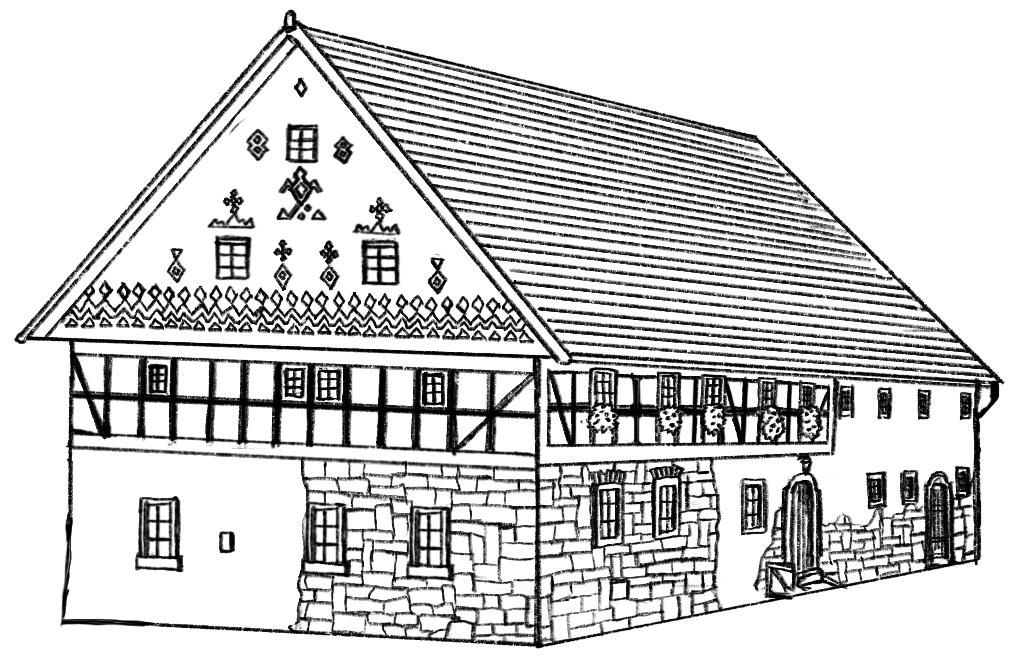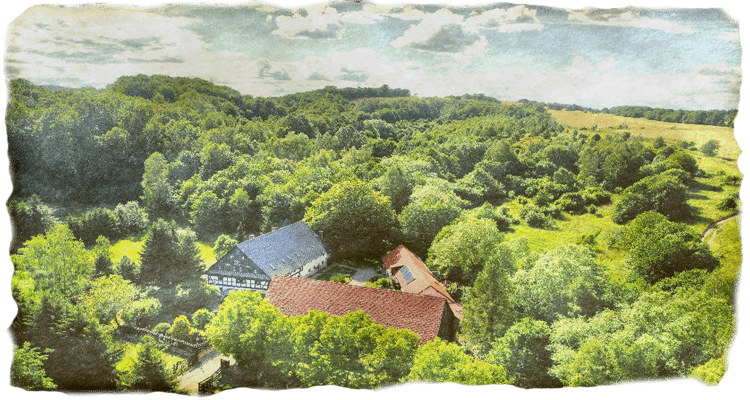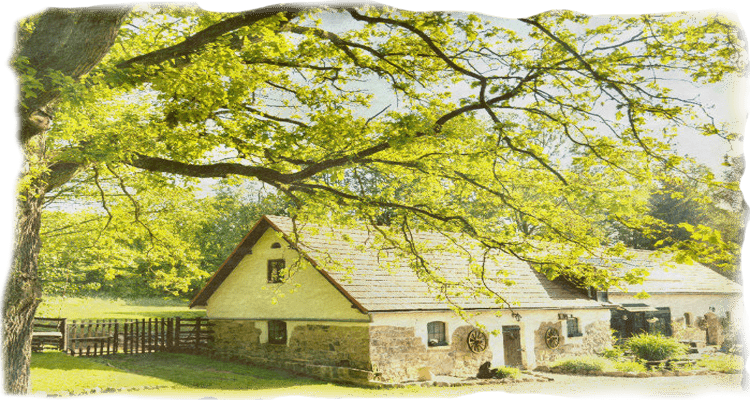The Battle of Leuthen: A Masterstroke of Military Genius
Strategic Situation
The Austrian army, led by Prince Charles Alexander of Lorraine, had gained control of Silesia, with its capital Breslau falling into Austrian hands. Frederick's objective was clear: to recapture the economically vital province of Silesia. By December 2, Frederick had consolidated his forces, which included remnants of the "Silesian Army" under Prince August Wilhelm of Brunswick-Bevern, defeated at Breslau.
Maneuver to Battle
Frederick's army, totaling around 33,000 men, marched toward Leuthen, where the Austrian army, twice the size of Frederick's force, had established its position. The Austrians, confident in their superior numbers, extended their line over a front of nearly nine kilometers.
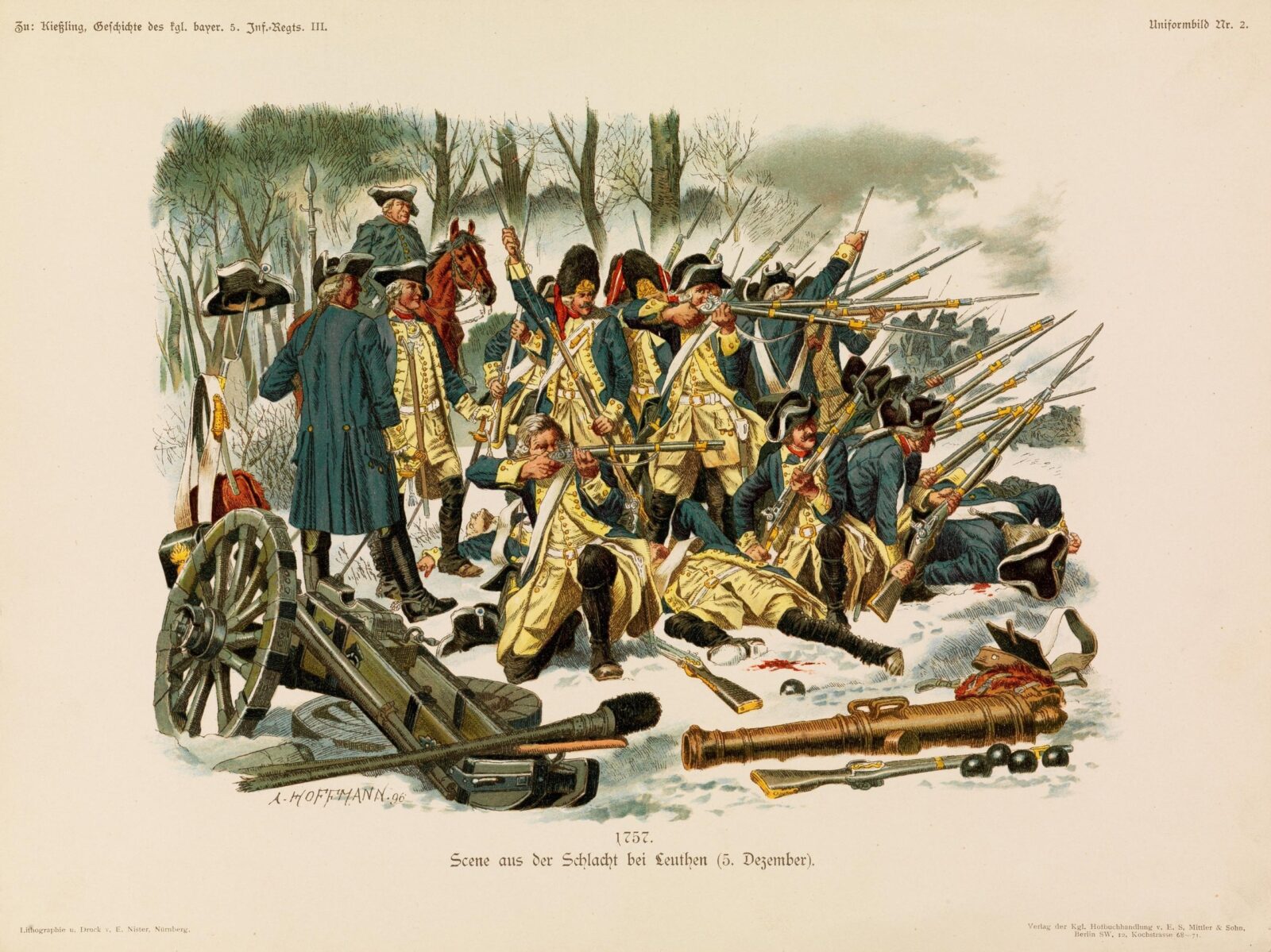
Soliders of the "Königlich Bayerisches Infanterie-Regiment Großherzog Ernst Ludwig von Hessen" — A historic infantry regiment of the Royal Bavarian Army
Battle Unfolds
The brilliance of Frederick's strategy was evident in his deployment. On the morning of December 5, the Prussian army, organized into two central infantry wings and two flanking cavalry wings, moved toward Borne. From a vantage point in Borne, Frederick observed the Austrian positions and recognized the potential of the Schleier- and Sophienhügel hills to shield his flanking maneuver.
Tactical Deployment
Frederick executed a daring tactical plan. He ordered a series of feints by his left wing to fix the Austrian forces in place while he stealthily maneuvered his right wing, comprising a significant portion of his infantry and cavalry, to strike the vulnerable southern flank of the Austrian line. This movement, hidden by terrain and executed with precision, caught the Austrians off guard.
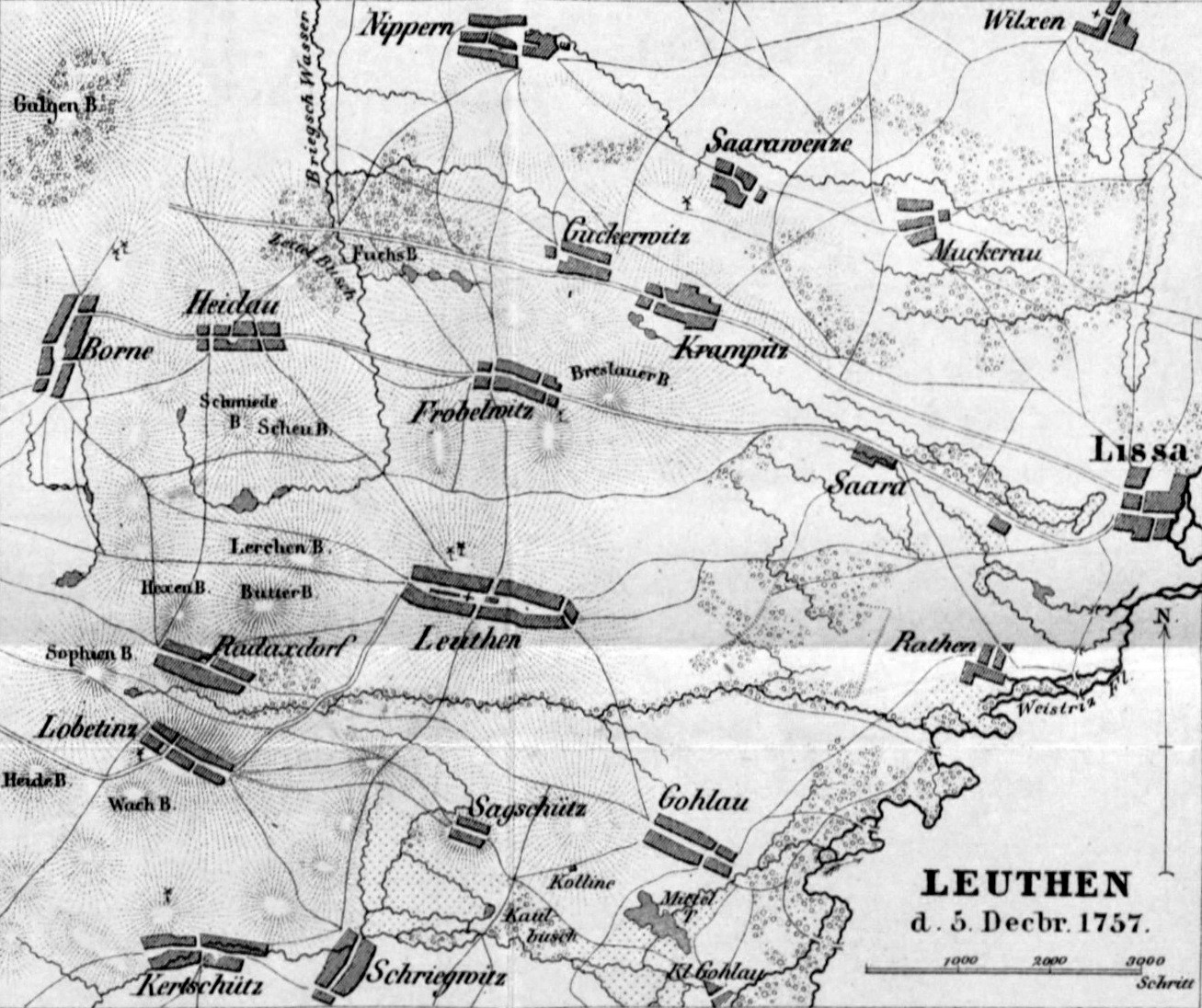
Map of the region
The Assault
The Prussian right wing, under the cover of hills, moved south and then southwest, eventually pivoting to form a diagonal line against the southern end of the Austrian line. This oblique formation allowed Frederick to concentrate his forces at the point of attack, achieving local superiority despite his overall numerical disadvantage. The Prussian attack began with an intense artillery bombardment, followed by an infantry advance led by General von Zieten's cavalry.
Austrian Response
The Austrian left wing, primarily composed of troops from Bavaria and Württemberg, crumbled under the unexpected and concentrated Prussian assault. As the Prussians pushed forward, the Austrian line began to falter, with Prince Charles struggling to reposition his troops to meet the threat. However, the rapidity and ferocity of the Prussian attack, coupled with Frederick's excellent use of terrain and maneuver, left the Austrians reeling and unable to form an effective defense.
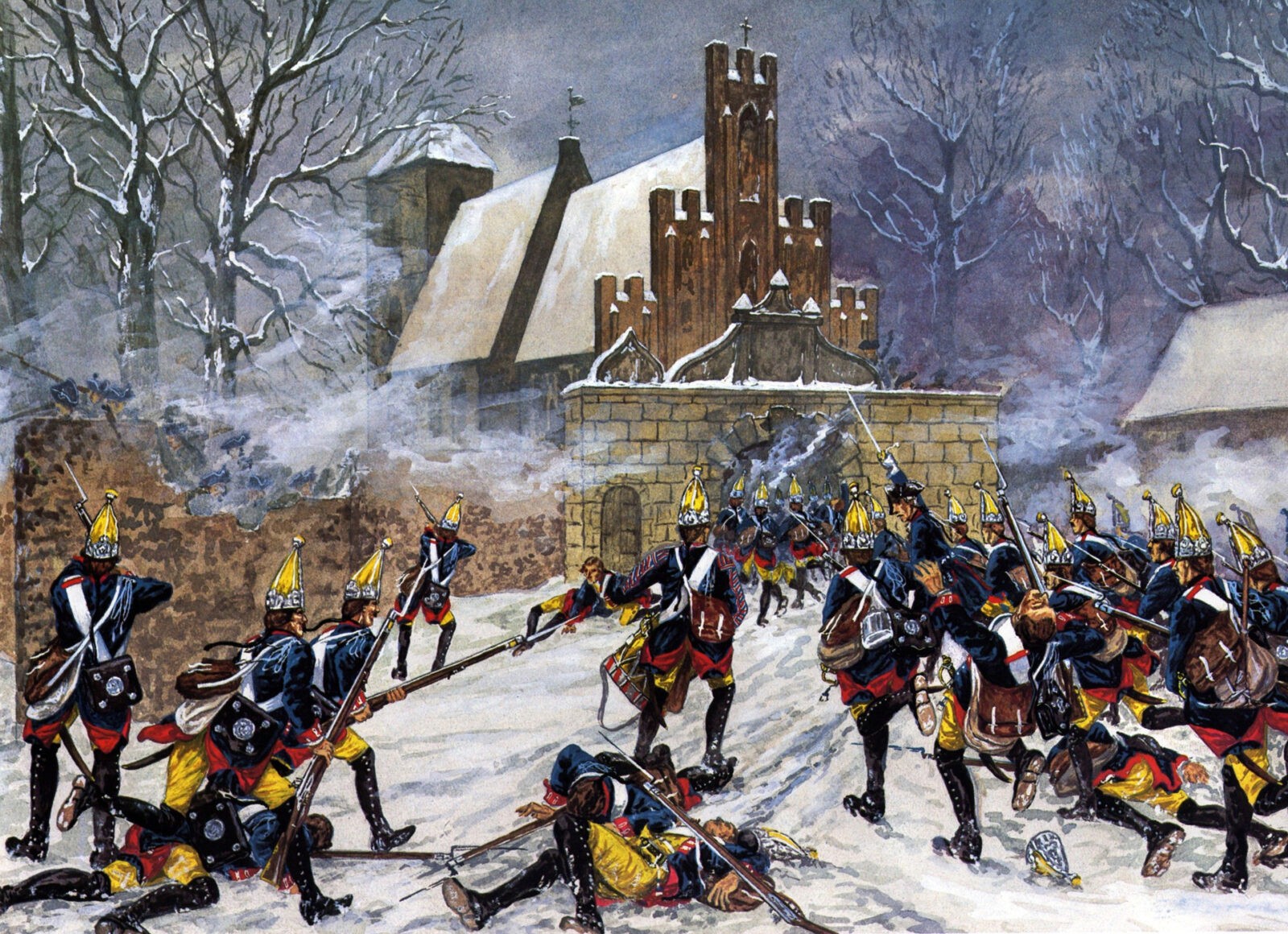
A battalion of the veteran Rot-Wurzburg Regiment in Leuthen’s Roman Catholic church.
The Climax and Aftermath
The decisive moment came with a bold charge by the Prussian cavalry, which broke through the Austrian lines, causing widespread panic and disarray. The Austrians, overwhelmed and outflanked, began a disorderly retreat. Frederick's army pursued vigorously, inflicting heavy casualties. The battle, though costly for the Prussians, was a tactical masterpiece and marked a turning point in the Seven Years' War, reaffirming Prussia's military prowess and Frederick's reputation as a brilliant commander.
The victory at Leuthen was not just a triumph of strategy and tactics but also a testament to the discipline, training, and morale of the Prussian Army. It showcased Frederick's ability to leverage his smaller, well-drilled force against a larger adversary through superior maneuvering and battlefield innovation, setting a precedent in military history that would be studied and emulated by future generations of military leaders.
Your Connection To The Battle Of Leuthen
The Seven Years' War left an indelible mark on Niederschlesien (Lower Silesia) and the surrounding areas of the Lodge, enriching the region with historical significance. Visiting this area, you can immerse in a past where the echoes of this global conflict are still evident in numerous sites and stories
The site of the Battle of Leuthen and around is dotted with battlefields and memorials, local tour operators offer guided tours of significant Seven Years' War sites and museums in the area, like the Silesian Museum, feature exhibits dedicated to the Seven Years' War
Distance:
80
Drive time:
1:30 h
Duration:
min. 3-4 h


